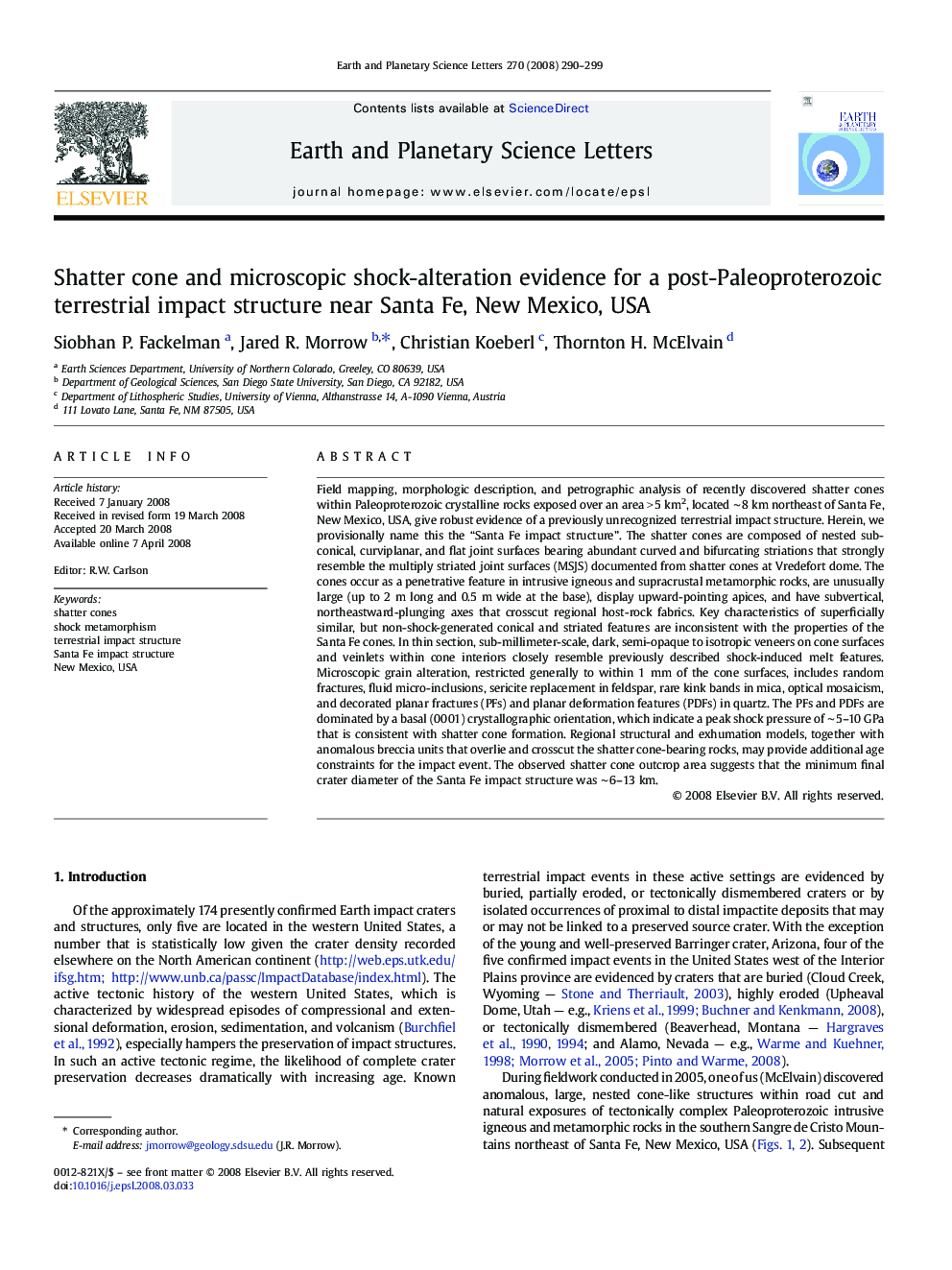| Article ID | Journal | Published Year | Pages | File Type |
|---|---|---|---|---|
| 4679666 | Earth and Planetary Science Letters | 2008 | 10 Pages |
Field mapping, morphologic description, and petrographic analysis of recently discovered shatter cones within Paleoproterozoic crystalline rocks exposed over an area > 5 km2, located ∼ 8 km northeast of Santa Fe, New Mexico, USA, give robust evidence of a previously unrecognized terrestrial impact structure. Herein, we provisionally name this the “Santa Fe impact structure”. The shatter cones are composed of nested sub-conical, curviplanar, and flat joint surfaces bearing abundant curved and bifurcating striations that strongly resemble the multiply striated joint surfaces (MSJS) documented from shatter cones at Vredefort dome. The cones occur as a penetrative feature in intrusive igneous and supracrustal metamorphic rocks, are unusually large (up to 2 m long and 0.5 m wide at the base), display upward-pointing apices, and have subvertical, northeastward-plunging axes that crosscut regional host-rock fabrics. Key characteristics of superficially similar, but non-shock-generated conical and striated features are inconsistent with the properties of the Santa Fe cones. In thin section, sub-millimeter-scale, dark, semi-opaque to isotropic veneers on cone surfaces and veinlets within cone interiors closely resemble previously described shock-induced melt features. Microscopic grain alteration, restricted generally to within 1 mm of the cone surfaces, includes random fractures, fluid micro-inclusions, sericite replacement in feldspar, rare kink bands in mica, optical mosaicism, and decorated planar fractures (PFs) and planar deformation features (PDFs) in quartz. The PFs and PDFs are dominated by a basal (0001) crystallographic orientation, which indicate a peak shock pressure of ∼ 5–10 GPa that is consistent with shatter cone formation. Regional structural and exhumation models, together with anomalous breccia units that overlie and crosscut the shatter cone-bearing rocks, may provide additional age constraints for the impact event. The observed shatter cone outcrop area suggests that the minimum final crater diameter of the Santa Fe impact structure was ∼ 6–13 km.
